What is milling machine? Milling machines, which have existed for over 300 years, are highly utilized industrial machining tools, renowned for their exceptional quality and speed. Grasping the fundamentals of mill machine offers manufacturers a competitive edge. This article aims to offer a comprehensive understanding of the milling machine's operational process. You'll discover various types of milling machine with CNC, their associated tools, and the numerous benefits they offer. Additionally, you'll gain insights that will significantly enhance the success of any milling machine operation. Now, let's dive straight into the core of the matter without further ado.
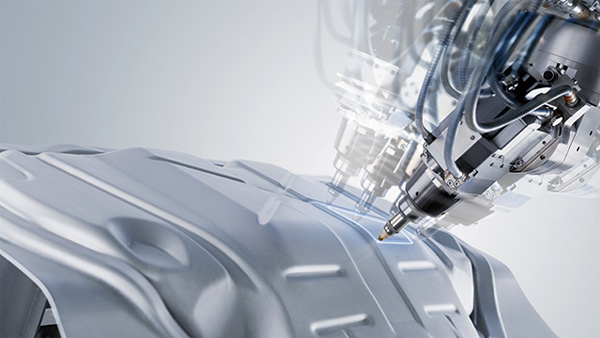
CNC mill machine is an industrial tool that removes material from a stationary workpiece using rotating cutting tools to create precision parts. As a key piece of equipment in subtractive manufacturing, it can be operated manually or with Computer Numerical Control (CNC). By altering the shape and type of cutting tools, mill machines can perform diverse functions, making them invaluable assets in any workshop.
CNC metal milling machines represent a transformative innovation in manufacturing and prototyping. Through the employment of a computer-guided system, these machines automate intricate milling processes, resulting in significant improvements in precision, reliability, and operational speed. Advanced 4-axis and 5-axis milling machines are equipped with sophisticated software and programming that effectively operate the milling machinery. Whether utilized as horizontal or vertical machining centers, CNC milling machines are equipped with electronic variable speed and coolant systems, providing extended durability. By converting computer commands into mechanical movements, these machines offer an unparalleled level of control over the production process.
CNC milling machines exhibit remarkable efficiency, setting them apart from traditional manual mills that rely heavily on labor and manual proficiency. By automating the production process, CNC milling machines minimize the need for human intervention, subsequently reducing the occurrence of errors. These machines are capable of operating seamlessly for extended durations, thereby enhancing overall productivity.
After knowing what milling machine means, let’s come to know its uses. CNC machine mill serves numerous purposes, including machining flat and irregular surfaces, drilling, boring, threading, and slotting. It enables the effortless creation of intricate parts like gears, making it a versatile machinery capable of producing a diverse range of components.
Milling machines are capable of machining diverse materials including metal, plastic, and wood, utilizing cutting tools such as end mills, face mills, and drills. These machines often boast high-grade cast iron construction, variable speed settings, power feeds, and milling cutters that traverse the X, Y, and Z axes.
As essential tools in manufacturing, they provide the flexibility to produce a broad array of products with precision and efficiency. Their versatility and precision render them indispensable in industries ranging from automotive and aerospace to furniture and mold production. They execute various CNC milling machine operations from basic tasks like slotting and keyway cutting to more intricate functions such as contouring, die sinking, and 3D milling.
Milling machining differs from lathe machines in that they affix the workpiece to the table rather than mounting it between the headstock and tailstock above the bed. Milling machines excel in handling a broader range of materials, offering superior precision and control, and removing material with a rotating cutting tool. On the other hand, routers are primarily used for woodworking and some plastics, executing lighter and faster cuts with a spinning bit to shape or hollow out areas on the workpiece.
There are many different ways to classify milling machines and many types of machines in each classification. These various milling machines are:
Spindle orientation refers to the direction of the spindle axis. There are three classifications in this regard:
Vertical Milling Machines
A vertical milling machine features a spindle axis aligned in the vertical plane, enabling the cutting tool to penetrate deeply into the workpiece for expanded operations like drilling and cutting. These machines come in two configurations: the bed mill and the turret mill. Typically, they utilize long and thin cutting tools for precision machining.
Horizontal Milling Machine
A horizontal milling machine is characterized by a spindle axis that lies in the horizontal plane. Consequently, the cutting tool approaches the workpiece laterally instead of vertically. These machines often incorporate a rotary table to enable the cutting tools to adopt an angled approach. Additionally, the cutting tool used in horizontal milling machines is typically shorter and thicker.
Vertical Milling Machines vs Horizontal Milling Machine
When it comes to vertical machines vs horizontal milling machine, a vertical milling machine is considered better than a horizontal mill due to its higher versatility and more straightforward setup. This is why most milling machines are available in the vertical configuration. The maintenance requirement of vertical milling machines is lower than the horizontal counterpart.
Universal Milling Machine
A universal milling machine offers the versatility of both horizontal and vertical milling operations. This flexibility is achieved through a worktable that can rotate to nearly a perpendicular position, enabling access to complementary planes for comprehensive machining capabilities.
The axes of a milling machine signify the extent to which the cutting tool can move freely. In essence, the cutting tool axis corresponds to the number of directions in which the tool is capable of maneuvering. Depending on these parameters, milling machines can be classified into various types:
1. 3-axis Milling Machine
The 3 axis milling machine is the most fundamental type of equipment, enabling the cutting tool to move along the three linear axes of X, Y, and Z. This type of milling machine enjoys widespread popularity due to its cost-effectiveness and straightforward operation. Furthermore, compared to multi-axis machines, the maintenance requirements for 3 axis milling machines are relatively lower.
2. 4-axis Milling Machine
A 4-axis milling machine offers enhanced capabilities beyond the three linear axes of X, Y, and Z, incorporating an additional rotary axis. This rotary axis can be any one of the A, B, or C axes, with A representing rotation around the X-axis, B around the Y-axis, and C around the Z-axis. The inclusion of this rotary axis allows the 4-axis milling machine to create highly intricate and complex parts through the angular movement of the cutting tool.
3. 5 axis Milling Machine
The 5 axis CNC milling machine is capable of utilizing all three linear axes, as well as any two of the rotary axes, often employing rotary tables to simplify spindle axis complexity. This advanced machinery is renowned for its ability to produce intricate parts at a high speed, making it suitable for mass production applications.
4. 6-axis Milling Machine
The 6-axis milling machine CNC boasts the capability to move along all three linear axes and three rotary axes, enabling it to machine the work surface from all angles simultaneously without the need for repositioning. This advanced machinery offers exceptional precision, catering to a wide range of requirements, and its production speed is sufficient for mass-production applications.
There exists a diverse array of milling machines that vary based on their unique structural designs. These distinct types of milling machines include the following:
1. Fixed Bed Milling Machine
A fixed bed milling machine features a stationary bed securely affixed to the frame, with components like the knee and saddle assembly remaining fixed and non-adjustable. This type of milling machine excels at executing cutting operations, and its reduced number of movable parts simplifies equipment maintenance, making it a practical and efficient choice.
2. Knee-Type Milling Machine
The knee mill, a configuration of the vertical milling machine, mounts the worktable on a movable casting known as the 'knee'. This knee is capable of moving vertically along the Z-axis, allowing the operator to fine-tune the vertical position of the worktable. By doing so, knee mills enhance the versatility of the milling machine, particularly in operations like drilling.
3. Planer-Type Milling Machine
The planer mill, a straightforward machine setup, excels at cutting flat surfaces on a workpiece in a direction perpendicular to the tool axis. This type of mill finds widespread application in woodworking, particularly for crafting finished timber. Its simplicity not only ensures ease of operation but also facilitates straightforward maintenance.
4. C-Frame Milling Machines
The C-frame mill features a stationary spindle and knee structure that solely permits vertical movement along the Z-axis, with the X and Y axes integrated into the worktable. These mills are favored for mass production tasks due to their impressive milling speed.
5. Travelling Column Milling Machines
The traveling column milling machine boasts a column capable of sliding horizontally, making it ideal for machining exceptionally long parts. This horizontal movement is facilitated by guide rails mounted on the machine bed.
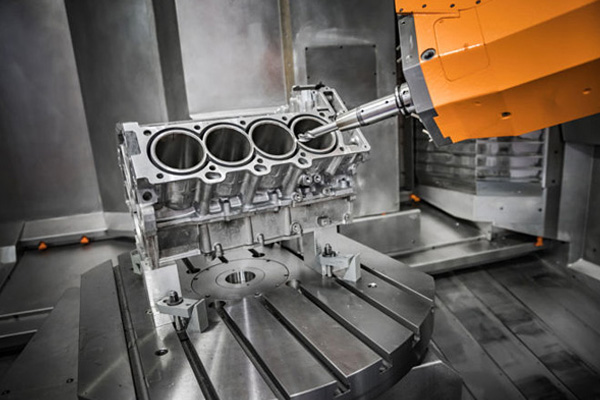
Having a comprehensive understanding of the advantages and disadvantages of CNC milling machines empowers you to make strategic decisions.
1. Advantages of Milling Machines
The utilization of milling machines is sustained by numerous distinct advantages that ensure their prolonged application. Here are some key benefits of these machines: Firstly, the cutter rotates at a rapid speed, equipped with multiple cutting edges, enabling a swift rate of metal removal. Secondly, this high-speed rotation contributes to superior surface finishes. Thirdly, in the case of CNC machines, the integration of software to oversee the milling process enhances accuracy and finish, ultimately boosting overall production efficiency. Lastly, milling machines are renowned for their exceptional precision, surpassing that of other machines.
2. Disadvantages of Milling Machines
Despite their numerous advantages, milling machines also exhibit certain disadvantages that limit their use in certain machining applications. Firstly, they are prone to high rates of flank wear and crater wear. Secondly, the use of inferior cutter materials or machines with loose arbors can lead to vibrations, which in turn can result in substandard work on the workpiece. Lastly, chips generated during the machining process can become lodged in the cutter's teeth, potentially causing operational issues.
CNC milling machine prices can range significantly, starting at approximately 10,000 and potentially reaching as high as 200,000. This variation is influenced by various factors, including the specific type of mill, the number of axes it possesses, its overall size, the brand, and the type of control system it utilizes.
Bonus tips here! When selecting a milling machine, it's crucial to consider various factors:
1. Evaluate the control system, with CNC being the most versatile but manual machining offering the lowest cost.
2. Determine the appropriate machine type based on the shape and application of the part you wish to machine.
3. Consider the size of the workpiece, as large parts may require a gantry or moving column milling machine. Machine power is another factor, ensuring it can handle your workload requirements.
4. Budget is also significant, as milling machines span a wide price range, allowing you to shortlist options within your financial constraints.
5. Quality is paramount, as a poorly built machine may not be able to withstand the shocks of the milling operation.
Nowadays, more and more people choose a CNC milling service provider for their CNC projects since this can offer several advantages over purchasing a milling machine outright. Here are some key reasons why opting for a service provider might be the better choice:
Cost Efficiency
Engaging a CNC milling service provider eliminates the need for upfront capital investment in purchasing and maintaining a milling machine. This can result in cost savings, especially for one-off or occasional machining needs.
Access to Expertise
CNC milling service providers typically have experienced technicians and engineers who specialize in operating and programming milling machines. By leveraging their expertise, you can ensure high-quality and precise machining for your project.
Flexibility and Scalability
Working with a service provider gives you the flexibility to scale production according to your project requirements. You can easily adjust the scope of work, from prototyping to large-scale production runs, without the constraints of machine capacity.
Advanced Technology
CNC milling service providers often invest in the latest machinery and technology upgrades to stay competitive. By outsourcing to them, you gain access to state-of-the-art equipment without the need for continuous equipment upgrades on your end.
Focus on Core Activities
By delegating the milling process to a service provider, you can free up your internal resources and focus on core business activities, such as product development, marketing, and customer engagement.
Risk Mitigation
CNC milling service providers bear the responsibility for machine maintenance, repairs, and ensuring compliance with industry standards. This can help mitigate operational risks and ensure smooth project execution.
Milling machines have revolutionized the capabilities of achieving exceptional part quality in the mass production of consumer components. Their exceptional precision even renders them the preferred choice for prototyping and research endeavors. If you seek a comprehensive solution to fulfill your manufacturing needs, milling machines could be an ideal match for you.
Within the top tier of the industry, some brands excel in terms of quality, durability, and precision, whereas others are renowned for their cost-effectiveness. If you're looking for a CNC milling service provider to help you better handle the whole project instead of purchasing a milling machine on your own, Richconn can be your reliable partner. It offers the optimal blend of superior performance, reasonable pricing, and exceptional service tailored to your specific requirements.
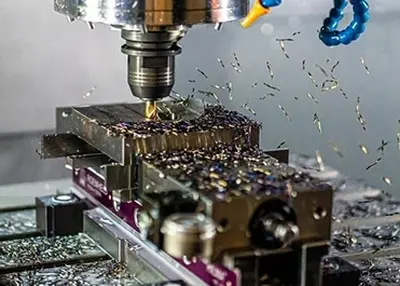 Titanium vs. Aluminum: High Performance Metals for Machining and 3D PrintingOctober 11, 2023When you think of an outstanding combination of material properties for parts, light weight and strength come to mind. Of course, the same is true for aluminum and titanium. Both materials meet other important criteria, such as excellent corrosion resistance and heat tolerance.view
Titanium vs. Aluminum: High Performance Metals for Machining and 3D PrintingOctober 11, 2023When you think of an outstanding combination of material properties for parts, light weight and strength come to mind. Of course, the same is true for aluminum and titanium. Both materials meet other important criteria, such as excellent corrosion resistance and heat tolerance.view The Intersection of Chameleon PVD Coating and GadgetsJanuary 5, 2024Innovations in technology have paved the way for stunning advancements in the gadget industry. One such breakthrough that mesmerizes tech enthusiasts is the thrilling use of Chameleon PVD coating. Wit...view
The Intersection of Chameleon PVD Coating and GadgetsJanuary 5, 2024Innovations in technology have paved the way for stunning advancements in the gadget industry. One such breakthrough that mesmerizes tech enthusiasts is the thrilling use of Chameleon PVD coating. Wit...view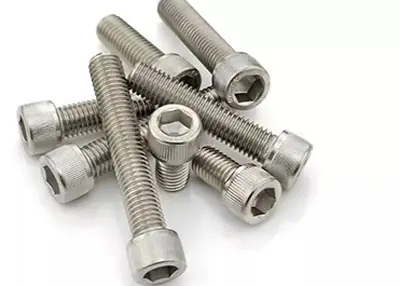 The Basics For the Right ThreadOctober 16, 2023At Richconn, you can easily add threaded holes to your CNC machined parts. Adding by turning gives you many additional threading options. There are two types when it comes to threading: Internal threads and external threads.view
The Basics For the Right ThreadOctober 16, 2023At Richconn, you can easily add threaded holes to your CNC machined parts. Adding by turning gives you many additional threading options. There are two types when it comes to threading: Internal threads and external threads.view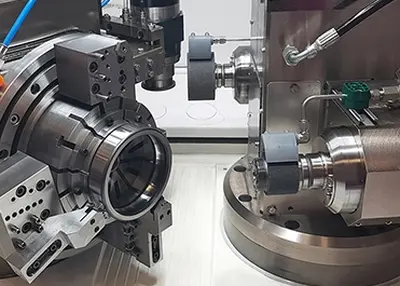 Understanding machining tools: types, uses and selectionNovember 1, 2023Machining tools are vital tools in manufacturing, used to cut, chip, grind and shape a wide range of materials, from metals to plastics to wood. Different tool types are used for different processes and materials to meet a variety of machining needs. Below are five common types of machining tools that are used in a wide range of manufacturing and processing applications.view
Understanding machining tools: types, uses and selectionNovember 1, 2023Machining tools are vital tools in manufacturing, used to cut, chip, grind and shape a wide range of materials, from metals to plastics to wood. Different tool types are used for different processes and materials to meet a variety of machining needs. Below are five common types of machining tools that are used in a wide range of manufacturing and processing applications.view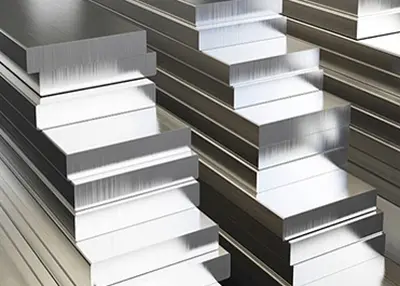 All About Hardness Definition: Types, Testing Methods & UnitsOctober 12, 2023Here is an in-depth overview of hardness definition. Follow this article to learn metal hardness for different materials and choose the suitable one for your project.view
All About Hardness Definition: Types, Testing Methods & UnitsOctober 12, 2023Here is an in-depth overview of hardness definition. Follow this article to learn metal hardness for different materials and choose the suitable one for your project.view The Role of CNC Automotive Parts in Automotive IndustryJune 17, 2024CNC machining is often used for complex designs, small products and parts. With CNC machine tools, a wide range of parts can be processed more accurately.With the rapid development of the automotive i...view
The Role of CNC Automotive Parts in Automotive IndustryJune 17, 2024CNC machining is often used for complex designs, small products and parts. With CNC machine tools, a wide range of parts can be processed more accurately.With the rapid development of the automotive i...view